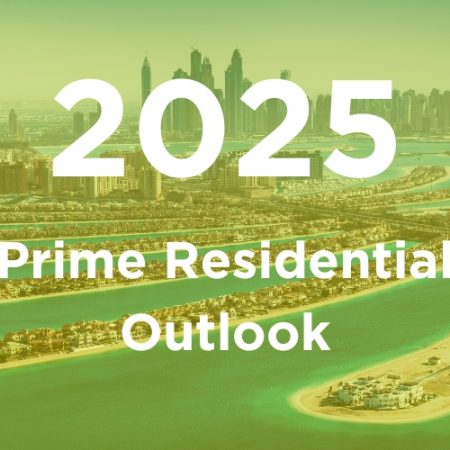Global tourism continues to recover as people around the world whet their appetite for travel.
In 2024, international tourism returned to pre-pandemic levels. Globally, 1.4 billion international tourists (overnight visitors) were recorded – up 140 million, or 11%, on 2023 levels. Strong demand for travel – particularly in markets that provide the most tourists – and the ongoing recovery of destinations in Asia and the Pacific drove the increase, with most destinations exceeding 2019 levels.
A resurgent travel sector has significant implications for real estate. Operational real estate – of which hotels are the most mature asset class – is increasingly attractive to investors.
They find the revenue streams that hospitality assets provide appealing – particularly in the context of recent high inflation and debt costs. Strong underlying demand has also boosted hotel occupancy levels and average daily room rates (ADR), which rose 2.6% to $142 per night in 2024 – further supporting investor confidence.
Tourism’s recovery is expected to continue in 2025. Preliminary forecasts show year-on-year growth in international tourist arrivals of 3-5% and a flurry of new hotels are set to open their doors. Shanghai, New York City, London and Dubai are forecast to open the most rooms in 2025, according to real estate data provider CoStar.
Global International Arrivals (millions)
Source: Savills Research using UN Tourism
Leyre Octavio de Toledo, Executive Director, Architecture and Occupier Solutions at Savills Spain, believes hotels need to respond to changing market demands to succeed. “It’s no longer enough to aesthetically renovate a hotel,” she says. “It’s now necessary to rethink a hotel’s spaces and functionalities to be more flexible, sustainable and connected to its surroundings, without losing the essence and character.”
Tourism trends fuelling growth include increasing demand for travel from the expanding middle classes in emerging markets and consumers prioritising experiences over goods.
While recovery has been global, nuances exist across regions. Germany, the US and China remain the largest source markets for international travel. In China, outbound international travel continues to recover but is not expected to reach 2019 levels until 2026.
Tourism arrival growth by region, 2019-2024
Source: Savills Research using UN Tourism
Total estimated export revenues from tourism (including passenger transport), reached $1.9 trillion in 2024, about 4% up on 2019 levels, making it a key economic driver for many jurisdictions. This global recovery has not been without its challenges, however. In 2024, Barcelona, Paris and the Canary Islands experienced protests against over-tourism.
However, these isolated incidents could help boost visitor numbers to lesser-known locations, as tourists seek out new destinations.
The regional picture: four markets in focus
The Americas: longer stays and luxury living in the Caribbean
International tourist arrivals to the long-popular Caribbean region surpassed their pre-pandemic peaks in 2023, and reached 28 million arrivals in 2024. From 2010 to 2024, tourist arrivals to the region increased by 40% and grew by 8% from 2019-2024.
One of the Caribbean’s key features, alongside hotel and resort development, has been the growing prominence of branded residences and other purpose-built developments.
As of July 2024, there were 21 operating developments across the region with 1,500 residences. A further 30 developments are in the pipeline, which will bring an additional 2,100 residences to the region.
“Branded residences as an asset class were born out of the hospitality industry, specifically luxury hotels,” says Rico Picenoni, Head of Global Residential Development Consultancy at Savills. “Today, these developments, whether they are co-located with a hotel or standalone, support local economies and help to increase tourism to their local markets.”
For many resort developers, especially in the luxury segment, branded residential is just one part of a more mixed-use approach, as global operators look to leverage their brands and diversify their income. The Caribbean also tends to see more condo-hotels, which typically are unbranded, and occupants can live there for the whole year if they wish.
Europe: sun, sand and city breaks in Spain
In 2024, the volume of international travellers visiting Spain exceeded 2019 levels. Most of its 94 million visitors prefer coastal regions, with the Canary Islands the most popular destination.
Other European countries are the main source of visitors. The vast majority (82%) stay in tourist accommodation, with 67% checking into hotels and 11% preferring tourist housing.
Spain’s tourism sector accounts for more than 13% of GDP. It is expanding at double the rate of the overall economy and was projected to be worth more than €200 billion in 2024. Revenue per available room (RevPAR) increased by 11.5% in 2024, with Madrid (up 14%) enjoying particularly strong growth.
“The key to consolidating this success will be the capacity to continue to offer differential experiences for ever-more demanding customers, maintaining the quality of service and avoiding standardisation,” says Juan Garnica Alvarez-Alonso, Executive Director, Hotels, Savills Spain.
“The outlook for 2025 is very positive, with a rationalised growth in visitors, room nights and ADRs at sustainable levels,” adds Garnica. “We also foresee – potentially starting this year – a concentration of both ownership and operators, which will provide a surge in corporate transactions.”
The Middle East: emerging as an international destination
International arrivals to the Middle East in 2024 were up 32% on 2019, making it one of the strongest-performing regions relative to pre-pandemic levels.
Tourist developments across the Middle East are widespread and ambitious as countries seek to diversify their economies and create jobs. The UAE has developed global appeal; Saudi Arabia is pushing forward with its 2030 vision; and Oman has a new airport, enabling it to accommodate increasing visitor numbers.
The Middle East’s tourism sector makes up around 9% of the region’s GDP and is forecast to average 7.7% growth per year until 2032. That’s three times the 2.5% growth rate for the region’s economy overall. The increasing number of tourist attractions in the region encourages visitors to draw up travel itineraries that encompass all the region’s key sights.
“Western Europe and South Asia consistently deliver the most visitors to the UAE, while there has been noticeable growth from China,” says Rachael Kennerley, Director of Research at Savills Middle East. She adds that tourists from Western Europe come for winter sun, while those from warmer climates typically seek more experience-based breaks.
“Much anticipation surrounds the opening of the Wynn Al Marjan Island in Ras Al Khaimah in early 2027, the UAE’s first licensed gaming venue, while the forthcoming Etihad Rail passenger service between 11 cities across the seven emirates could also bring ‘interrailing’ to the UAE.”
She adds that a strong pipeline of mega-projects in Saudi Arabia, combined with seven new ports for cruise ships, will significantly broaden the country’s appeal.
Asia-Pacific: Japanese tourism reaches new heights
Japan attracted 37 million tourists in 2024, comfortably beating the previous high of 32 million in 2019, and further growth is forecast. ADR continued to rise in 2024, spearheaded by a 20% YoY increase in Tokyo, and occupancy levels recovered.
Elevated construction costs and labour shortages continue to strain new hotel supply. The limited pipelines will benefit existing hotels – particularly in major tourist hubs such as Tokyo, Osaka, and Kyoto – and should contribute to higher ADRs and hotel asset valuations.
Repeat visitors to Japan are more likely to venture beyond the major tourist hubs, which is likely to lead to sustainable growth in regional markets.
“In 2024, Japan’s hotel market averaged 19% RevPAR growth nationwide. Approximately 80% of this growth was driven by an increase in ADR, with upscale and luxury hotels in Tokyo and other major cities exceeding the national average,” says Hirofumi Matsunaga, Director of Hotels at Savills Japan.
Hotel assets in Japan are highly prized among investors and accounted for a historic 20% of total annual real estate transactions in 2024, buoyed by several standout deals. Japan’s comparative lack of upscale and luxury-branded hotels is expected to drive more development, branding and value enhancement.
“The market has continued its strong growth this year, supported by a weaker Japanese yen. Large-scale events, such as the Osaka-Kansai Expo, will also drive demand,” adds Matsunaga.
With the rebound in international tourism projected to continue over the coming years, we expect the hospitality sector to benefit further, as increased demand pushes up room rates, elevating returns for investors.


